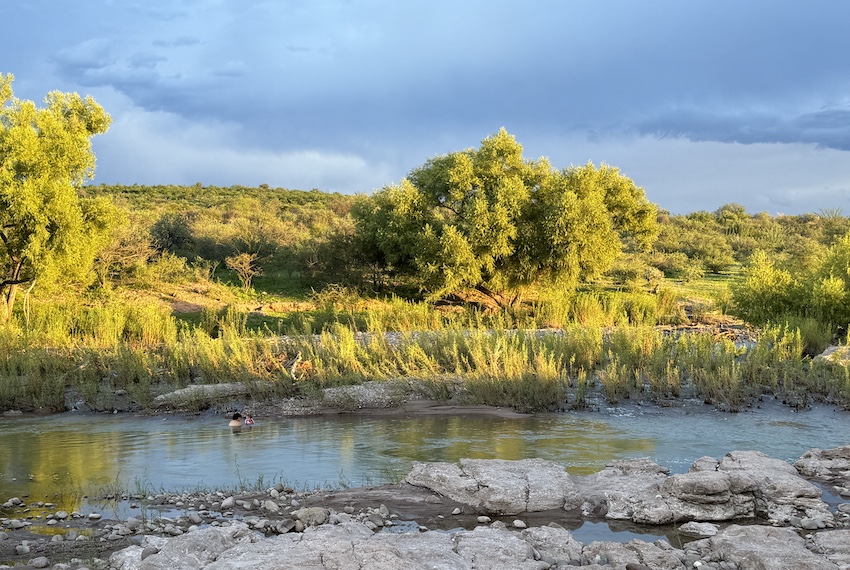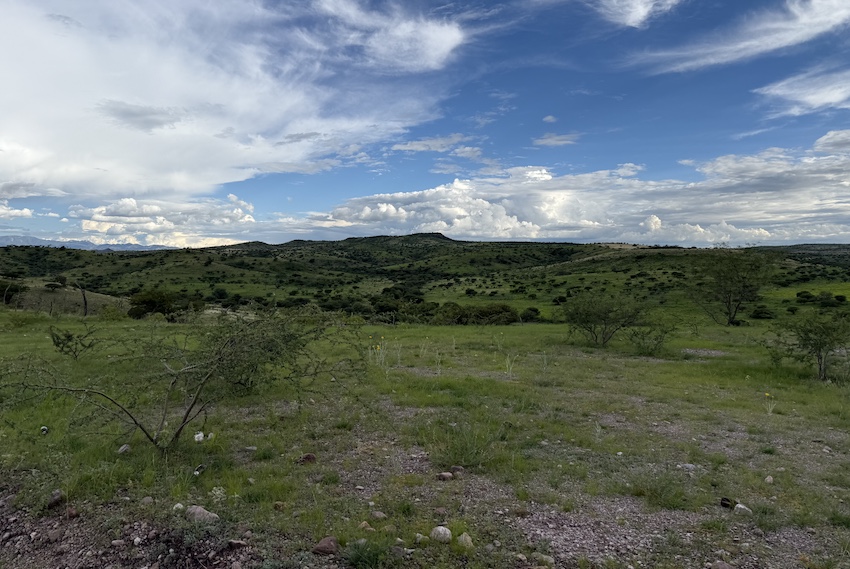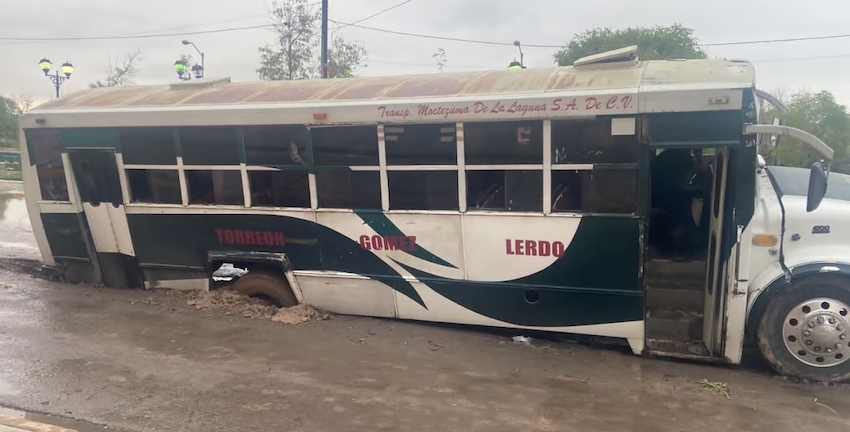They say home is where the heart is, and I agree — though in today’s globalized world, the idea of home feels more complicated than that. I spent my childhood in a rancho in Durango. Not a lone ranch house, but a small, rural village of about 50 homes and 150 people. At 12, I moved with my family to the Chicagoland area, where my parents and siblings still live. Now I’m based in Mexico City. If home is where the heart is, then mine is in three places.
The long road to Santa Rosa

In July, I returned to Santa Rosa, my first home, after four years away. My parents go back each summer, and my older brother brings his family, too. I wanted to coincide with them. The usually sleepy ranchería comes alive in June, July, and August, then again in December. Weddings, quinceañeras, horse races, coleaderas, cabalgatas — the calendar fills fast. But first, you have to get there.
And getting there is no small feat. The “convenient” route is flying into Durango’s capital city, then driving five to six hours, with the last three on rough roads. Sedans don’t stand a chance — if it’s rained recently, they’ll get stuck in the mud. A sturdy truck is the only way.
Another option is to drive from the U.S. My family did this for years after moving to Chicago. We’d load up the car, spend three days on the road, and stop at roadside motels on the U.S. side for two nights before finally crossing into Mexico through Ojinaga, Chihuahua. My brother still does this journey at least twice a year.
Then there’s the El Paso route, popular with many families. You fly into El Paso, cross into Ciudad Juárez, and catch the overnight bus — twelve hours to Santa María del Oro, the nearest town to Santa Rosa. From there, it’s still a two-hour drive. However you arrive, the journey is long, uncomfortable, and often exhausting. It usually takes days just to recover.
Rancho life, seen anew
But once there, it’s worth it. Santa Rosa is rugged and remote, tucked among mountains and desert. Durango’s semi-arid climate usually means scorching summers, but this year was different. Heavy rains had transformed the land. Rivers brimmed, creeks ran strong, and everywhere I looked, grass and vegetation replaced the usual muted desert tones. I was astonished — it was the greenest I’d ever seen.

Returning as an adult, I see things I once overlooked. Most families here live off cattle and remittances. Horses and cows dominate the landscape. As a child, I never grasped how relentless life as a farmer really is. My father still raises cattle, and during my ten-day stay, I watched him work from dawn to dusk — feeding, vaccinating and guarding pastures. At 72, he still mounts his horse daily, looking after his herd like a true old-school cowboy-ranchero.
Another observation: some ranchos that were practically ghost towns 20 years ago are now thriving. La Noria, for example, used to have very few people. This summer, I was shocked to see it transformed — with arches welcoming visitors into the rancho and homes remodeled and freshly painted. My parents explained that many of those who left to work in the U.S. decades ago have now retired and chosen to return and spend their golden years here.
This pattern is common. Families may leave for 20 or 30 years, working tough jobs in the U.S., but if they’re documented, they come back in the summers and winters. That’s when rancherías like Santa Rosa come to life. Fiestas, cabalgatas, and weddings are often scheduled around these visits, so locals and returnees can celebrate together.
Even my U.S.-born nephews feel the pull. From seven-year-old Oscar Jr. to 18-year-old Christian, they ask to come back every year. Watching them embrace the land moved me. If I have kids one day, I’ll make sure they carry that same connection.
Beauty and risk
Modernity has reached Santa Rosa in its own way. Wifi arrived a few years ago, though electricity and cell service can still be unreliable. While I was there, the power went out for 24 hours, and reception was so spotty you could forget about depending on your phone. Unplugging is still easy — sometimes, unavoidable.

But rancho life also comes with danger. In summer 2024, a family of three drowned while trying to cross a river swollen with rain. The father, confident he could make it across in his truck with his wife and three-month-old baby, didn’t survive. A couple of years ago, an older couple driving down from the U.S. veered off a cliff and died. A relative of mine recently fell from a horse and spent weeks in a coma. These tragedies sound like scenes from a particularly unlikely movie, but they’re part of everyday reality here.
Cultural norms can surprise outsiders, too. At parties, most men wear guns strapped to their belts, firing them in the air when a popular corrido plays. I don’t share this to glorify or condemn — it’s simply part of life in this corner of northern Mexico. With little to no police presence, it’s the Wild West in some ways. For many men, a gun is part of the outfit, along with the hat, boots, and belt.
Returning to my roots
Visiting Santa Rosa unlocks something new within me each time. My trip to the place where I spent my childhood evoked a myriad of emotions and themes — nostalgia, pride, joy, roots, heritage, and the concept of home(s).
When I was a college student at UIC-Chicago, I took a class on Latin American Studies. I had a distinguished Mexican-American professor, probably in his 40s or 50s, who shared an anecdote: growing up, he rejected his parents’ love of norteño music and leaned into hip-hop, wanting nothing to do with what his parents played. But as he got older, something shifted — he started craving the music of his childhood. He returned to his roots. I remember finding that story fascinating and wondering how it might relate to me later in life.
I was never ashamed of where I came from, but I did feel indifferent, more focused on bigger, better places. Leaving the village opened the world to me, and I wanted to see it all. That led me to study abroad in Italy during college and live in South Korea for two years in my 20s.
Now, though, I feel a fondness and pride for Durango that has taken years to surface but is now firmly rooted. Whenever I go to Garibaldi in Mexico City, I enjoy mariachi — but what I really crave is norteño music, especially old-school corridos.
I will always carry in my heart the place where I spent my childhood. In many ways, it completes the triangle of my life — Durango, Chicago, and Mexico City. Three homes that shaped me, each in its own way. And I’m already looking forward to returning to the first one, Santa Rosa, in December.
Rocio is a Mexican-American writer based in Mexico City. She was born and raised in a small village in Durango and moved to Chicago at age 12, a bicultural experience that shapes her lens on life in Mexico. She’s the founder of CDMX IYKYK, a newsletter for expats, digital nomads, and the Mexican diaspora, and Life of Leisure, a women’s wellness and spiritual community.




